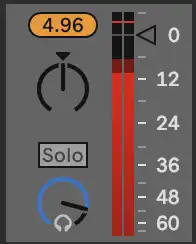Clipping
In the context of digital audio, it is important to address the phenomenon known as clipping. In essence, clipping is a consequence of exceeding the digital storage limits within a computer system, resulting in irreversible data loss.
In practical terms, when the volume of a sound surpasses the capacity of the computer to capture it, any information beyond this threshold is lost. Within a DAW, this upper limit is conventionally denoted as 0dB. An indication of clipping, typically depicted by a red flag on the volume meters, signals that the audio signal has exceeded this established limit.

It is noteworthy that modern DAWs operate with a 32-bit floating-point bit-depth, a feature designed to mitigate data loss even in the presence of clipping. This technological advancement facilitates the seamless processing of audio, offering greater flexibility in music mixing within the digital realm.
While DAWs can accommodate clipping without immediate data loss, it is prudent to observe best practices. Maintaining control over clipping, referred to as gain staging, is advised for various reasons. Some plugins require adequate headroom for precise audio processing. Furthermore, although DAWs permit clipping, a final render of the composition may suffer data loss if clipping occurs in the master buss. Therefore, a careful approach to gain staging is essential for optimal audio production outcomes.

In the example above, you can visually see the clipping occurring in the waveform. The first section of the audio has clear transients and tails while the second section is completely squashed. The information that was contained within the transients is completely lost. In it's place is digital distortion that can be extremely unpleasant in most situations. While the waveform might look similar to extreme compression, it does not have the same results as you can hear in the audio example.